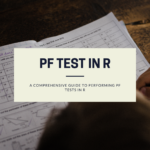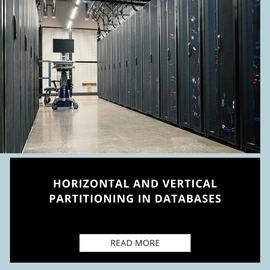Yes, the Borel field and the sigma Borel field are different concepts in measure theory. The Borel field is the smallest sigma-algebra, containing all open intervals on the real line. It is generated by open intervals through countable unions, intersections, and complements. On the other hand, the sigma Borel field, also known as the Borel sigma algebra or Borel sigma field, is an extension of the Borel field. It includes not only the Borel sets but also additional sets obtained through countable unions, intersections, and complements of Borel sets.
In simpler terms, the Borel field consists of sets formed by combining open intervals, while the sigma Borel field encompasses sets that can be constructed by countable operations on Borel sets. The sigma Borel field is a larger collection of sets than the Borel field, allowing for more flexibility and the consideration of more complex mathematical structures.
So, while the Borel field is a subset of the sigma Borel field, the sigma Borel field includes additional sets beyond those found in the Borel field.
Understanding Borel Field
Definition of Borel Field
The Borel field, named after Émile Borel, is a fundamental concept in measure theory and probability theory. It is a collection of sets that satisfies certain properties and forms the smallest sigma-algebra containing all open intervals on the real line. In simpler terms, the Borel field is the smallest collection of sets that includes all open intervals and is closed under countable unions, intersections, and complements.
Properties and Characteristics of Borel Field
- Closure under countable operations: Closed under countable unions, intersections, and complements. This closure property allows us to manipulate and combine Borel sets in various ways.
- Generality and flexibility: It encompasses a wide range of sets, including open intervals, closed intervals, half-open intervals, unions, and intersections of intervals, and their complements. It provides a rich structure for studying the properties of sets and their measures.
Examples of Borel Sets
- Open intervals: (a, b), where a and b are real numbers.
- Closed intervals: [a, b], where a and b are real numbers.
- Half-open intervals: (a, b] or [a, b), where a and b are real numbers.
- Unions and intersections of intervals: The Borel field includes sets formed by taking unions and intersections of intervals, such as (a, b) ∪ (c, d) or [a, b] ∩ (c, d).
Importance of Borel Field in Probability Theory
It serves as the foundation for defining probability measures on the real line. Probability measures assign probabilities to events or sets in a systematic and consistent manner, enabling the rigorous study of random variables and the quantification of uncertainty.
By considering sets, we can define probabilities for events such as “rolling a number between 1 and 6 on a fair six-sided die” or “selecting a real number between 0 and 1.” It provides a natural framework for modelling and analyzing probabilistic phenomena, making it an indispensable tool in the field of probability theory.

Understanding Sigma Borel Field
Definition of Sigma Borel Field
The sigma Borel field, also known as the Borel sigma-algebra or Borel sigma-field, is an extension of the Borel field. It is the smallest sisigma algebrahat contains not only the Borel sets but also additional sets obtained through the process of taking countable unions, intersections, and complements of sets in the Borel field.
In simple terms, the sigma Borel field includes all sets that can be formed by combining Borel sets in countable ways and taking their complements.
Properties and Characteristics of Sigma Borel Field
The sigma Borel field inherits many properties from the Borel field but expands its scope by allowing for countable operations on sets. Some key characteristics of the siSigmaorel field include:
- Closure under countable operations: Similar to the Borel field, the sigma Borel field is closed under countable unions, intersections, and complements. This closure property allows for the construction of more complex sets by combining and manipulating Borel sets in countable ways.
- A larger collection of sets: The sigma Borel field includes not only the sets in the Borel field but also additional sets formed through countable unions, intersections, and complements. This enlarges the collection of sets and allows for a more comprehensive description of mathematical structures.
Relationship between Borel Field and Sigma Borel Field
The Borel field is a subset of the sigma Borel field. In other words, every set in the Borel field is also in the sigma Borel field. However, the sigma Borel field contains additional sets that are not in the Borel field, making it a larger and more encompassing collection of sets.
Examples of Sets in Sigma Borel Field
Sets can be more intricate and involve countable combinations of Borel sets. Some examples of sets include:
- Countable unions of Borel sets: A set formed by taking the union of countably many Borel sets, such as ∪n=1 to ∞ An, where each An is a Borel set.
- Countable intersections of Borel sets: A set formed by taking the intersection of countably many Borel sets, such as ∩n=1 to ∞ An, where each An is a Borel set.
- Complements of Borel sets: The complement of a Borel set, denoted as Ac, where A is a Borel set.
Differences Between Borel Field and Sigma Borel Field
Size and Structure Differences
One of the key differences between the Borel field and the sigma Borel field lies in their sizes and structures. The Borel field is a smaller collection of sets, consisting of open intervals, closed intervals, half-open intervals, and their combinations through countable unions, intersections, and complements. On the other hand, the sigma Borel field is a larger collection, encompassing not only the Borel sets but also additional sets obtained through countable operations.
Sigma Borel Field as a Superset of Borel Field
The sigma Borel field extends the Borel field by incorporating countable unions, intersections, and complements of Borel sets. This inclusion of additional sets in the sigma Borel field provides a more flexible framework for dealing with complex mathematical constructs.
Examples Highlighting the Differences
- The set of rational numbers: The set of rational numbers is not a Borel set but belongs to the sigma Borel field. The rational numbers can be expressed as the countable union of singletons, which are Borel sets. Thus, the sigma Borel field captures the structure of the rational numbers, while the Borel field does not.
- Cantor set: The Cantor set is a classic example in mathematics with intricate fractal properties. It is a set formed by repeatedly removing open intervals from a closed interval. The Cantor set is not a Borel set but resides in the sigma Borel field due to its construction involving countable operations. This showcases how the sigma Borel field encompasses sets with complex self-similar patterns that are beyond the reach of the Borel field.
Applications of Borel Field and Sigma Borel Field
Probability Theory and Random Variables
Both play a crucial role in probability theory and the study of random variables. Probability measures, which assign probabilities to events or sets, are typically defined on the sigma Borel field. This allows for precise quantification of uncertainty and the analysis of random phenomena.
Random variables, which are measurable functions defined on a probability space, often rely on the Borel field for their definition. The Borel field provides a natural framework for specifying the events or outcomes of interest in probability calculations, enabling the formulation of probability distributions and statistical analyses.
Integration and Lebesgue Measure
They are instrumental in integration theory and the study of Lebesgue measure. Integration, a fundamental concept in analysis, relies on defining integrals for functions with respect to measures. The Borel field serves as a foundation for constructing the Lebesgue integral, which extends the concept of integration beyond the Riemann integral and allows for the integration of a broader class of functions.
The sigma Borel field, with its enlarged collection of sets, is essential for defining measures such as the Lebesgue measure. The Lebesgue measure assigns a size or measure to sets in a way that aligns with our intuitive notions of length, area, or volume. It provides a powerful tool for quantifying sizes and studying the properties of sets in a wide range of mathematical contexts.
Topology and Analysis
The Borel field and the sigma Borel field are closely connected to topology and analysis. In topology, the Borel sets play a fundamental role in defining topologies on spaces. The open sets, which are Borel sets, determine the open neighborhoods and the notion of continuity in topological spaces.
Moreover, the Borel field provides the foundation for constructing Borel measures, which are measures defined on the Borel sets. Borel measures have applications in diverse areas such as harmonic analysis, functional analysis, and differential equations, enabling the study of the properties and behaviors of functions and their integrals.
Conclusion
The distinction between the Borel field and the sigma Borel field is crucial for a comprehensive understanding of measure theory, probability theory, and their applications in various branches of mathematics. The Borel field, as the smallest sigma-algebra containing open intervals, provides the foundation for defining probability measures and studying random variables. Its closure under countable operations and generality make it a powerful tool for analyzing sets and their measures. On the other hand, the sigma Borel field extends the Borel field by incorporating countable unions, intersections, and complements of sets. This enlargement allows for the consideration of more intricate mathematical structures such as the Cantor set and the rational numbers, which are beyond the reach of the Borel field.







